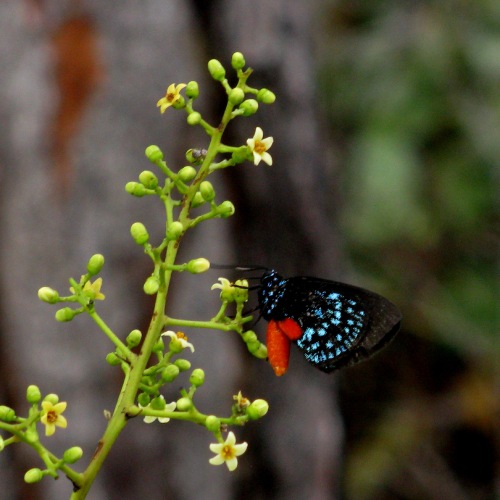Abaco National Park
est. 1994
About
Established in 1994, the Abaco National Park was created to protect the northern breeding grounds for The Bahama Parrot. Unique amongst parrots, this population of parrots nest in underground cavities in the pine forest. Within it’s 20,500 acre boundary, this park protects a large tract of Caribbean Pine Forest and coppice forest that is home to a variety of native and endemic wildlife.

Bird Hotspot
This park has high bird activity.

Warden
This park has active patrol wardens.
The Northern Pines.
One of the main reasons for the establishment of the Abaco National Park was to protect the northern habitat of this endangered species. However, along with the parrots, these majestic forests support a wide array of native plants and animals. 4 endemic birds, The Bahama Yellowthroat, Bahama Warbler, Bahama Swallow and Bahama Woodstar can be found here.
Abaco speciality birds such as the West Indian Pecker are often found here. See a full list of birds found in The Abaco National Park here.
The Atala Hairstreak is a vibrant butterfly of the pine forest. The Abaco National Park is one of the few places to see this amazing creature in its natural habitat.

History
How Children Saved the Abaco Parrot.
The Bahamas National Trust identified the need for a national park in Abaco to protect the northern habitat and breeding area of the endangered Bahama Parrot. In 1986, Dr. Rosemarie Gnam, then a doctoral candidate, conducted a census of the Bahama Parrot population in Abaco. Her results indicated that there were around a scarce 1,500 birds. The BNT realized that the Bahama Parrot had reached a point where human intervention would be necessary to ensure its survival.
The Bahama Parrot Conservation Committee, a multi-agency committee was formed and signed a memorandum of understanding with RARE Center for Tropical Conservation. The Committee met with the outstanding success: 8,000 Bahama Parrot Posters were distributed throughout the country, 27,750 school children were addressed and learnt about the importance and plight of The Bahama Parrot. Quincy, the committee’s Bahama Parrot mascot became a recognized and loved figure and 6,000 people wore Bahama Parrot T-shirts and pledged support for the conservation effort. Outstanding community support and an unheard of level of support from the local business community all contributed to the success of the campaign.
On May 9, 1994, the Bahamas Government signed a 99-year lease with the Bahamas National Trust declaring some 20,500 acres in South Abaco a national park. Upon signing the lease, Prime Minister Hubert Ingraham commented that there was no way that he could ignore over 800 letters that had been written to the Minister of Agriculture by school children requesting that a park be established in Abaco as a home for Quincy the Bahama Parrot.
Over the years, the number of parrots has risen from the initial 1,500 birds in 1994 to 2,400 birds in 2006, due to the efforts of volunteers to minimize the impacts of predation. However, since the implementation of the Predator Control Program in 2009, the population of parrots has risen to 8,900 individuals.
Today, the Abaco National Park welcomes thousands of Bahama parrots every spring for the breeding season. With the aid of warden patrols and an effective predator control program, the parrots breed safely and successfully in the park’s boundaries.

